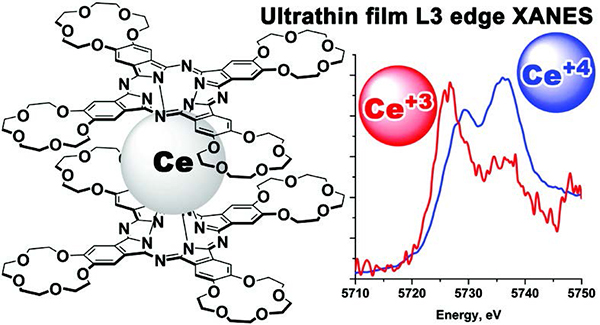Журнал "Макрогетероциклы"
Navigation
News
Impact Factor 2021 = 1.200 has been issued by ISI Web of Knowledge (JCR 2021).
Search
ISSN 1998-9539
Fluorescence Mode XANES Spectroscopy as a Powerful Tool for Redox-Isomerism Studies in Ultrathin Films
Alexander V. Shokurov,a@ Daria S. Kutsybala,a Alexander G. Martynov,a Alexey V. Yagodin,a Yulia G. Gorbunova,a,b Dmitri Novikov,c Artem V. Bakirov,d Maxim A. Shcherbina,d Sergei N. Chvalun,d Vladimir V. Arslanov,a and Sofiya L. Selektora
aA.N. Frumkin Institute of Physical Chemistry and Electrochemistry of Russian Academy of Sciences, 119071Moscow, Russia
bN.S. Kurnakov Institute of General and Inorganic Chemistry of Russian Academy of Sciences, 119071 Moscow, Russia
cDeutsches Elektronen-Synchrotron, PETRA III, D-22607 Hamburg, Germany
dN.S. Enikolopov Institute of Synthetic Polymeric Materials of Russian Academy of Sciences, 117393 Moscow, Russia
@Corresponding author E-mail: Shokurov@phyche.ac.ru
Dedicated to Professor Dieter Wöhrle on the occasion of his 80th Anniversary
DOI: 10.6060/mhc191071s
Macroheterocycles 2019 12(3) 264-267
Redox-isomerism, i.e. intramolecular electron transfer that results in isostructural compounds with different charge distribution between metal center and ligands, and thus in their different physico-chemical characteristics, attracts considerable interest from the standpoint of development of novel molecular devices. However, direct determination of the valence states of the coordinating cations remains an urgent task. In the present work on the example of cerium bis-tetra-15-crown-5-phthalocyaninate it was shown that synchrotron source X-ray absorption near edge structure spectroscopy in fluorescent mode is a powerful method that allows one to directly observe valence states of the metal cations in redox-isomeric materials even in ultrathin single-layer Langmuir-Blodgett films, which are notably hard to study due to extremely small amounts of matter and low dimensionality.

| Attachment | Size |
|---|---|
| mhc191071s.pdf | 670.52 KB |
- 1666 reads
- Русский
